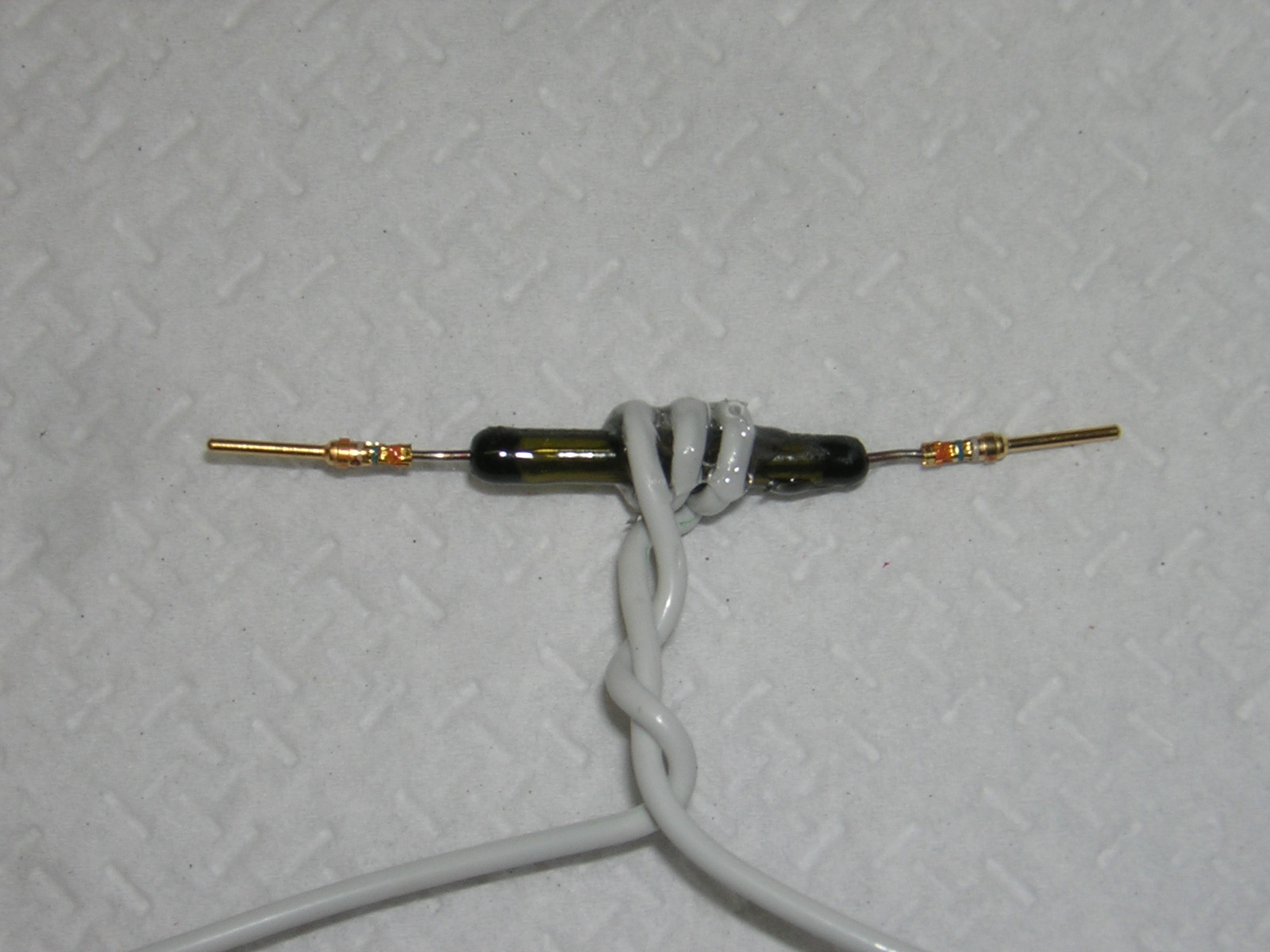 |
Matronics Email Lists
Web Forum Interface to the Matronics Email Lists
|
| View previous topic :: View next topic |
| Author |
Message |
Dennis Glaeser
Joined: 10 Jan 2006
Posts: 53
Location: Rochester Hills, Michigan
|
 Posted: Sun Apr 25, 2010 5:03 pm Post subject: Designing a circuit Posted: Sun Apr 25, 2010 5:03 pm Post subject: Designing a circuit |
 |
|
Joe Gores not only suggested using a reed switch to sense my prop end of travel, he even gave me one to try! Today I went out and played a bit. I found that 3 winds of 18AWG causes the switch to close just as the motor starts to strain against the stop. So I used a dab of Goop to mate the wire loops to the reed switch and used a piece of nylon tubing as a container. I’m attaching a picture, but don’t remember if those get through on this list. Doing this was a lot easier than I had imagined. It work great on the ground, but the weather here in MI was low IFR all day so no flight testing.
I’ve already ordered the parts for the circuit Bob designed, so I’ll be playing with that soon as well. I’ll be able to have both methods operating in parallel.
Thanks guys!
† Dennis
| | - The Matronics AeroElectric-List Email Forum - | | | Use the List Feature Navigator to browse the many List utilities available such as the Email Subscriptions page, Archive Search & Download, 7-Day Browse, Chat, FAQ, Photoshare, and much more:
http://www.matronics.com/Navigator?AeroElectric-List |
|
| Description: |
|
| Filesize: |
329.52 KB |
| Viewed: |
3408 Time(s) |

|
|
|
| Back to top |
|
 |
rjquillin(at)cox.net
Guest
|
 Posted: Tue Apr 27, 2010 9:15 am Post subject: Designing a circuit Posted: Tue Apr 27, 2010 9:15 am Post subject: Designing a circuit |
 |
|
At 17:55 4/25/2010, you wrote:
| Quote: | Joe Gores not only suggested using a reed switch to sense my prop end of travel, he even gave me one to try! Today I went out and played a bit. I found that 3 winds of 18AWG causes the switch to close just as the motor starts to strain against the stop. So I used a dab of Goop to mate the wire loops to the reed switch and used a piece of nylon tubing as a container. Iím attaching a picture, but donít remember if those get through on this list. Doing this was a lot easier than I had imagined. It work great on the ground, but the weather here in MI was low IFR all day so no flight testing.
Iíve already ordered the parts for the circuit Bob designed, so Iíll be playing with that soon as well. Iíll be able to have both methods operating in parallel.
Thanks guys!
Dennis |
Not sure if this is required or not, but a word of caution from one who's been there.
I've found, by experience, the glass envelope of reed relays can be fragile and is susceptible to fracture by external forces on the end leads. As we don't know how yours' is to be secured, just use care to insure no side loads can transfer from the crimped terminals to the interface of the lead and the glass.
For me, successful designs have always securely mounted the relay on a board or terminal strip, and had all wires exit from strain relieved terminals; preventing any loads to the reed relay itself.
Best---
Ron Q. [quote][b]
| | - The Matronics AeroElectric-List Email Forum - | | | Use the List Feature Navigator to browse the many List utilities available such as the Email Subscriptions page, Archive Search & Download, 7-Day Browse, Chat, FAQ, Photoshare, and much more:
http://www.matronics.com/Navigator?AeroElectric-List |
|
|
|
| Back to top |
|
 |
|
|
You cannot post new topics in this forum
You cannot reply to topics in this forum
You cannot edit your posts in this forum
You cannot delete your posts in this forum
You cannot vote in polls in this forum
You cannot attach files in this forum
You can download files in this forum
|
Powered by phpBB © 2001, 2005 phpBB Group
|



